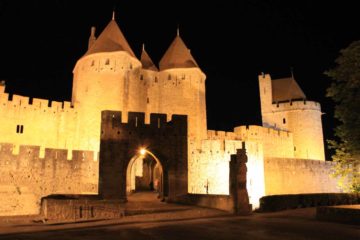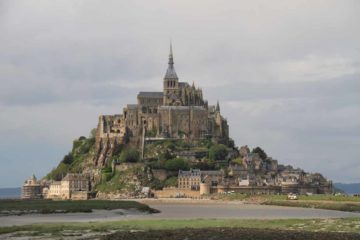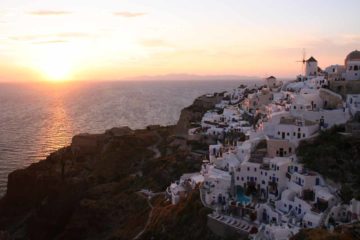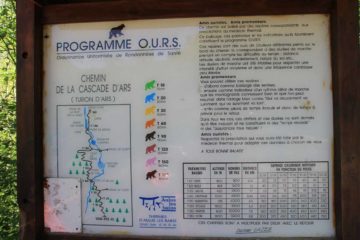About Pont d’Espagne (Bridge of Spain)
Pont d’Espagne (or Bridge of Spain) I think really refers to the general scenic area encompassing Lac de Gaube (Gaube Lake), the waterfalls, and the minor developments (a bustling cafe and cable car) at road’s end. It’s either that or the stone bridge (pretty standard in France) at the confluence of the two major cascades beyond the end of the road. I suppose we could’ve called this page Les Cascades du Pont d’Espagne, but we’ll just keep it short and sweet and refer to the waterfalls collectively as the Bridge of Spain for simplicity.
Even though the scenery at the paid parking area at road’s end had some memorable waterfalls on its own, there were several more waterfalls on the same stream throughout the drive up the D920. Nevertheless, we thought the main waterfall attraction was really the converging pair of cascades tumbling right besides a bustling cafe and underneath the arched stone bridge.
Even though there was nothing very special about the stone bridge itself, I believe its position right at the confluence of two thundering cascades was what gave this bridge its notoriety. Therefore, it turned out to be a very popular photo subject especially since it only made perfect sense to photograph a bridge in a place called the Bridge of Spain.

It was possible to continue on the trail going uphill towards some pretty lakeside scenery backed by mountains at Lac de Gaube (Gaube Lake). However, we’ve been told it was an hour’s hike each way (two hours return). We were hoping the cable car to get up there and shorten the walk was running, but our visit was a week before it was to be open for the peak season. Thus, we didn’t get to visit to visit the lake.
From a waterfalling standpoint, that was pretty much all there was to this place. Of course, there were so many more opportunities to get saturated with waterfalls on the drive up to the Bridge of Spain itself that perhaps this was a fine way to cap off a visit here.
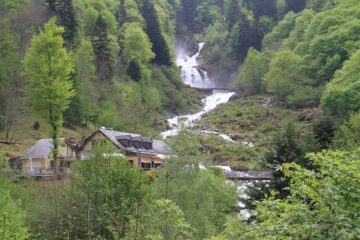
Beyond this well-touristed spot, the D920 continued uphill along a slow and winding mountain road full of switchbacks (I didn’t count how many). At seemingly every switchback, there were gushing cascades from the same river coming from the Bridge of Spain that one could easily be tempted to stop for and check out.
We managed to stop at a pair of such waterfalls though pullouts were few. In both the cases that we stopped, we actually drove further to the next switchback where there were pullouts. Then, we walked along the road back towards the waterfalls themselves. Specifically, one of the waterfalls we stopped for was called La Cascade de Cerisey. This particular one was hard to photograph given how misty it was.
Another one we stopped for didn’t appear to have a name though it could’ve easily been famous in its own right if not for its location in a place full of others. That waterfall was on the second-to-last switchback where we parked at the last switchback then walked back towards a trail (which I believe was a continuation of Chemin des Cascades). This trail offered some limited views of the cascade between trees. In hindsight, we probably could’ve done what others had done and save the 5.5 euros to park at Bridge of Spain by walking from where we parked the car. Oh well, you live and you learn.
Like Gavarnie, the Bridge of Spain also resides in the Hautes-Pyrénées (Upper Pyrenees) department of the Midi-Pyrénées region in the far south-southwest of France. We did notice quite a bit of Spanish being spoken here probably because of its proximity to Spain and the number of Spanish tour buses that come here as well.
Related Top 10 Lists
No Posts Found
Trip Planning Resources
Nearby Accommodations
This content is for members only. See Membership Options.Featured Images and Nearby Attractions
This content is for members only. See Membership Options.Visitor Comments:
Got something you'd like to share or say to keep the conversation going? Feel free to leave a comment below...No users have replied to the content on this page
Visitor Reviews of this Waterfall:
If you have a waterfall story or write-up that you'd like to share, feel free to click the button below and fill out the form...No users have submitted a write-up/review of this waterfall

